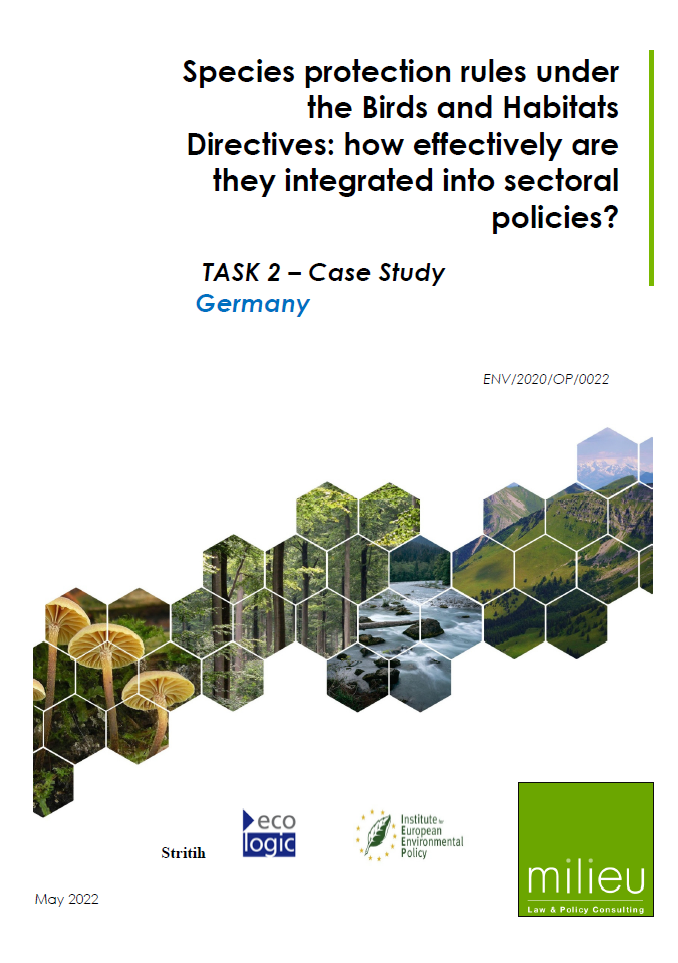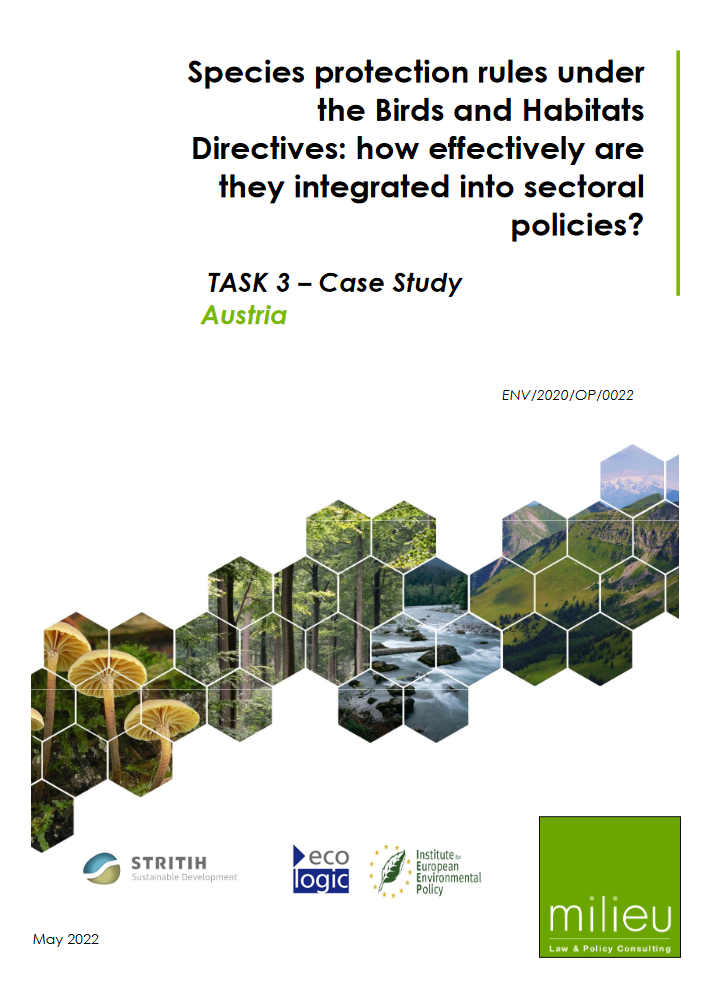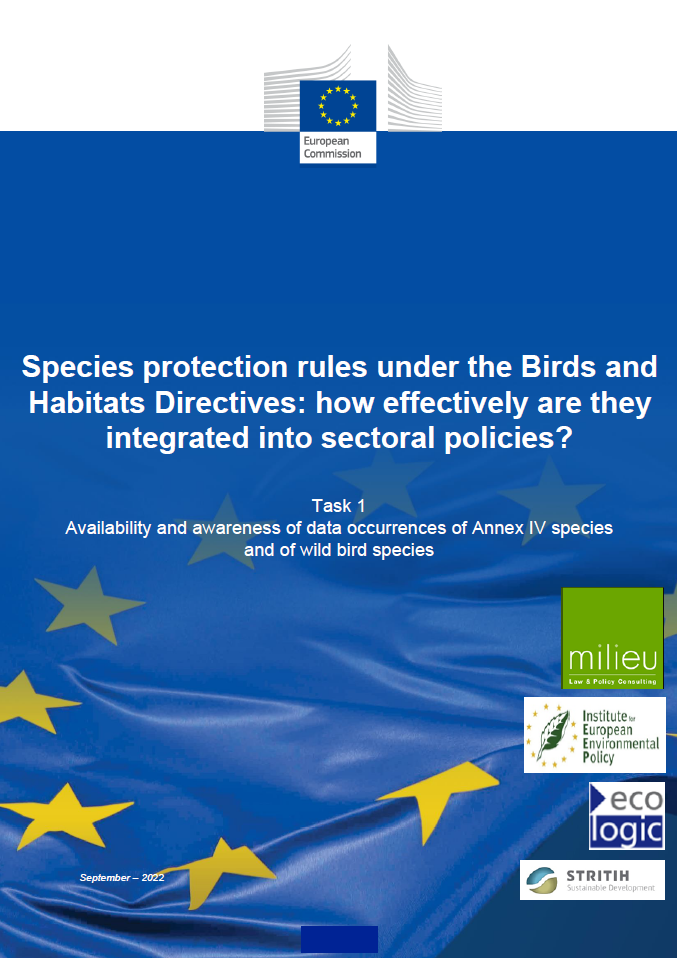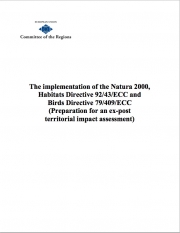Species Protection Rules under the Birds and Habitats Directives – Agriculture: Country studies
- Publication
- Citation
European Commission, Directorate-General for Environment, Species protection rules under the Birds and Habitats Directives – How effectively are they integrated into sectoral policies?. Task 2, Agriculture – Country studies, Publications Office of the European Union, 2022, https://data.europa.eu/doi/10.2779/86257
The Ecologic Institute, under the auspices of the EU-funded project, supported by the European Commission (DG Environment), undertook a comprehensive country study for Germany focusing on the integration of species protection rules, specifically within agricultural sectors, under the Birds and Habitats Directives. Engaging with over 20 national and regional experts and focusing particularly on pivotal regions like North Rhine-Westphalia, Lower Saxony, and Brandenburg, the study probed the implications of Article 12 and 13 of the Habitats Directive (HD) and Article 5 of the Birds Directive (BD), focusing on how thoroughly the regulations are transposed into national law, to reveal what efforts are being made to provide information about them to farmers and enforce them and to evaluate assessment and authorization procedures.
Species protection rules on agricultural land
Since the 1950s, the economic advancements due to industrialization of Germany’s agricultural practices have been shadowed by ecological repercussions such as habitat homogenization and specific species decline, notably in the Corn Bunting, prompting environmental concerns like soil degradation and reduced insect biomass. The Federal Nature Conservation Act (BNatSchG), Germany's conduit for transposing EU’s Habitats and Birds Directives into national law, introduces potential issues within the species protection framework, such as embedded exemptions for sectors like agriculture and a possibly incompatible definition of "significant disturbance" under EU law, thereby potentially providing a lenient legal framework particularly in agricultural contexts due to its broad exemptions and somewhat vague definition of "good agricultural practice."
Disparities in advisory services
Available advisory services across federal states exhibit variance in depth and quality concerning protected species and biodiversity conservation. Chambers of Agriculture, pivotal in farmer education, demonstrate a glaring need for enhanced capacities in specialized expertise on species protection and biodiversity conservation.
Enforcement of legal requirements for species protection
Enforcement, particularly on agricultural land, leans significantly on Common Agricultural Policy (CAP) compliance, with direct enforcement being minimal and significantly reliant on civil reports of infringements and a predilection towards cooperative, biodiversity-friendly measures amongst farmers. A mere 1% of farms undergo routine CAP compliance checks annually, revealing tangible gaps in on-ground species protection, especially considering the prevalent inclination towards "cooperation rather than coercion."
Deficiencies in assessment and authorization procedures
Environmental Impact Assessments (EIA) and species protection assessments notably underrepresent agricultural activities and their intertwining with species protection rules. Strengthening this framework necessitates strategic incorporation of scientific analyses, habitat mapping, and agricultural impact data on protected species and their habitats, enabling informed decision-making and bolstering biodiversity safeguarding amidst agricultural progress.
Recommendations:
- Refine legislative exemptions: Restructure agricultural exemptions in the BNatSchG, underpinning "good agricultural practice" with a solid, operational definition within national legal frameworks.
- Capitalize on CAP's potential: Enhance the symbiosis between CAP and species protection compliance, tethering CAP payments to adherence to species protection prohibitions.
- Upgrade preventative measures: Strike a balanced implementation of voluntary and compulsory instruments, including obligatory management requirements in instances of persistent or significant neglect of species protection legislation.
- Augment advisory and enforcement mechanisms: Strengthen monitoring and controls, aligning CAP and species protection compliance mechanisms to enhance efficacy and consistency.
- Enhance monitoring efficacy: Adopt and mainstream models like "Biologic Stations," ensuring sustained, systematic species protection monitoring across varied agricultural landscapes.
- Harmonize authorization protocols: Ensure coherent and detailed species protection assessments for agricultural activities across all Länder, underpinning evaluations and mitigative measures with consistency and comprehensive objectivity.
Adopting a strategic, multi-layered approach to unite agricultural development and biodiversity conservation enables mutually beneficial progress, particularly crucial as Germany's agricultural practices impact 63% of species under the Habitats Directive, such as the vulnerable Common Hamster. The Federal Ministry for the Environment (BMUV) highlights that mitigating species decline demands a substantive shift in land use practices across sectors like agriculture, not just strengthening legal frameworks.
Exploring pivotal insights from 12 national reports, a summary analysis unveils key challenges and best practices in implementing species protection rules in EU agriculture and forestry, guiding strategic recommendations.








